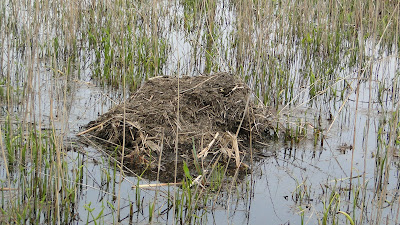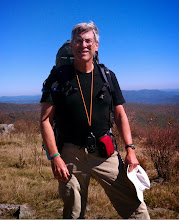Last Wednesday, I joined a new (for me) group who does regular Wednesday hikes in the mountains. I've been wanting to hike with them for about two months but had conflicts every Wednesday. Last Wednesday (April 10), they went to Little Devil Stairs in the northern part of Shenandoah National Park. Our group of about 19 split into three groups depending on the loop we each wanted to do - 6 miles, 8.5 miles, and 10.5 miles. I did the middle distance loop. All of us got to go up the very steep Little Devil Stairs section. My last time here was in 2014 for a three day solo backpacking trek.
For our hike last Wednesday, here is the track that I hiked, starting and ending at the orange circle and hiking counter clockwise (see the yellow arrow):
I liked this hike a lot. We hiked at least four different trails, and were next to beautiful streams at least half of the hike. There was no need to carry more than a liter of water. I filled up once near the end. We had a big group for this trek:
Spring always lags a bit in the mountains, but there were plenty of wildflowers out. These are Dutchman's breeches.
Little Devil's Stairs is rough and rocky. This does look a bit like natural stairs.
A stream ran nicely along the stairs.
The trail climbed through a rugged and steep gorge.
Now and then, we were treated to water shooting down the gorge.
Once we got out of the gorge, everyone rested until the entire group was together so that we could be clear who was hiking each optional distance.
The rest of the trail was not as steep, and was more downhill than up. It spent a lot of time next to streams, with some attractive little waterfalls at times.
Last year, I struggled keeping dry feet on stream crossings. For this hike, we must have made a dozen crossings but none of them were difficult.
Not far from the parking is a little mountain cemetery with this poignant reminder about the sacrifices that mountain folk made, often against their wills, so this park could be created.
Here are some more wildflowers from the hike, along with my identifications - which are not necessarily correct.
Round lobed hepatica
Rue anemone
Hairy yellow forest violet?
Bloodroot (I think).
On the way home, we stopped for a very late lunch together. It was a fun way to end a fun group hike.































































